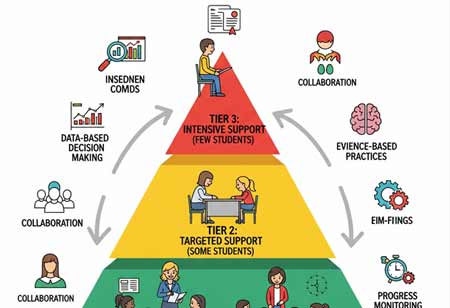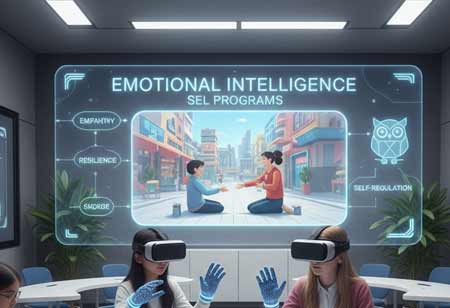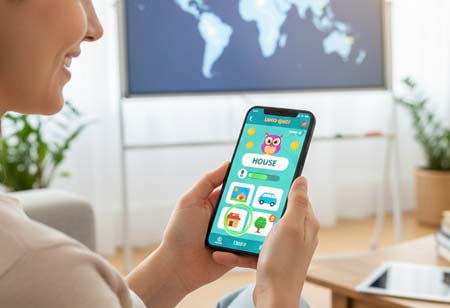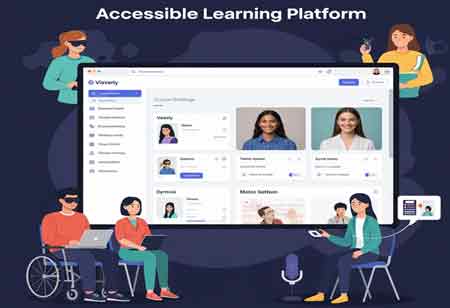THANK YOU FOR SUBSCRIBING
Be first to read the latest tech news, Industry Leader's Insights, and CIO interviews of medium and large enterprises exclusively from Education Technology Insights
Rethinking Education with AI and Game Mechanics
AI and game-based learning are revolutionizing education by creating personalized, engaging experiences that enhance motivation, retention, and adaptability for learners of all ages.
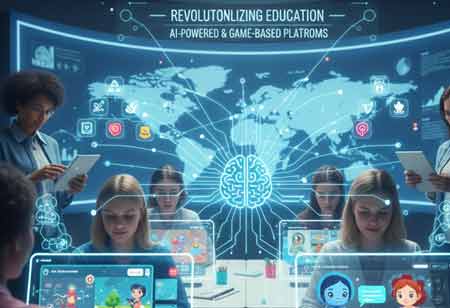
By
Education Technology Insights | Wednesday, October 08, 2025
Stay ahead of the industry with exclusive feature stories on the top companies, expert insights and the latest news delivered straight to your inbox. Subscribe today.
Fremont, CA: The world of education is moving away from the "one-size-fits-all" model toward highly personalized and engaging experiences. At the heart of this transformation is the powerful convergence of Artificial Intelligence (AI) and Game-Based Learning (GBL). By weaving the interactive nature of games with the adaptive intelligence of AI, new educational platforms are not just making learning fun—they are fundamentally changing how students of all ages absorb and retain knowledge.
The Convergence: AI and Game-Based Learning
GBL, which incorporates game design elements such as points, badges, challenges, and narrative into educational content, has long been recognized for its ability to boost motivation and engagement. However, traditional GBL often lacked the flexibility to cater to individual students' actual needs. This is where AI steps in as the ultimate personal tutor.
AI's role is to inject a layer of sophisticated adaptivity into the game environment. By analyzing a student’s in-game performance—including response times, accuracy, problem-solving strategies, and areas of struggle—AI algorithms create a dynamic profile of the learner. This profile then informs real-time adjustments to the game's difficulty, content, and feedback.
The Core of the Transformation: Immersive, Interactive, and Adaptive Systems
The convergence of AI and GBL is redefining education by enhancing engagement, improving retention, and enabling true personalization across all age groups. Traditional learning often struggles to sustain student interest. In contrast, AI-powered game-based platforms leverage intrinsic motivation through adaptive challenge levels that keep learners within their optimal “Zone of Proximal Development.” This balance fosters a state of deep focus and enjoyment, or “flow,” while immediate AI-driven feedback encourages students to view mistakes as opportunities for growth. Integrated game mechanics such as leaderboards, rewards, and badges further sustain engagement by making progress tangible and rewarding.
Beyond engagement, AI and GBL foster superior knowledge retention through experiential and adaptive learning. Immersive simulations and role-playing environments transform abstract theory into applied understanding, while intelligent reinforcement—such as adaptive revision schedules based on spaced repetition—enhances long-term comprehension. Crucially, this technology breaks the limitations of the one-size-fits-all classroom by delivering personalized experiences tailored to each learner. AI-driven GBL fosters adaptive, self-paced learning—from personalized tools for kids to immersive platforms for lifelong STEM and skill development.
The fusion of AI and game-based learning promises a future where education is inherently motivating, deeply engaging, and perfectly tailored to the individual. This new paradigm is not just a technological upgrade; it is a pedagogical revolution that has the potential to cultivate essential 21st-century skills—like critical thinking, problem-solving, and collaboration—while ensuring that knowledge acquisition is a fulfilling and effective personal journey for every learner.



